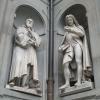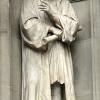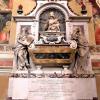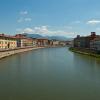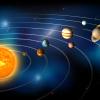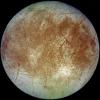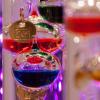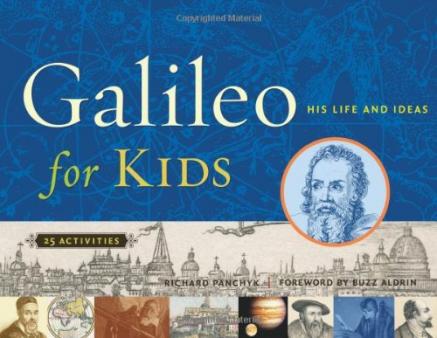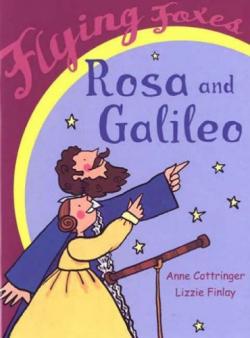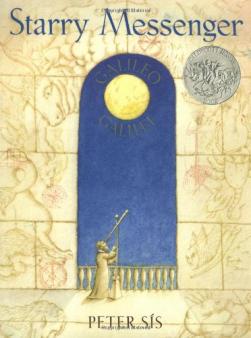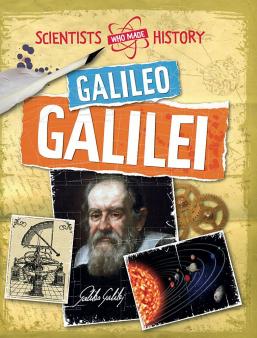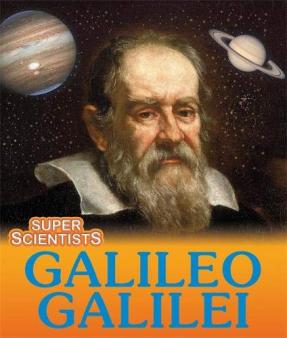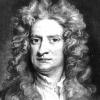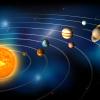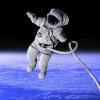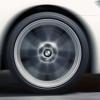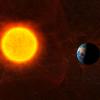Galileo Galilei
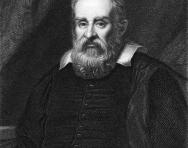
Scientist Galileo Galilei was born in 1564 and became famous for his work on mathematics and astronomy. He developed the telescope to enable close observation of the night sky and was famously imprisoned for his (correct) theory that the sun was at the centre of the universe.
Galilei was also interested in mechanics and motion and carried out many successful experiments to investigate his ideas.
Top 10 facts
- Galileo originally began studying medicine, but switched to mathematics.
- Galileo’s dad, Vincenzo, was a famous musician and composer.
- Galileo played the lute to a very high standard – his dad taught him!
- There is a very famous play called ‘Life of Galileo’ by the German playwright Bertolt Brecht.
- Galileo was the first person to officially study the night sky with a telescope.
- Galileo was sent to prison for his scientific belief that the sun was at the centre of the solar system.
- It wasn’t until 1992 that the Catholic Church officially cleared Galileo of wrong-doing for his scientific opinions.
- Galileo was the first person to spot the four moons of Jupiter – they are known as the Galilean moons.
- Galileo’s first job was as an art teacher.
- Galileo discovered that our moon has mountains and craters.
Galileo Timeline
- 1564Galileo Galilei is born on the 15th February in Pisa, Italy
- 1588Galileo becomes an art teacher
- 1589Galileo starts teaching mathematics at the University of Pisa

- 1591Galileo’s father dies
- 1592Galileo starts teaching mathematics at the University of Padau
- 1593Galileo invents the thermometer
- 1597Galileo invents the geometric compass
- 1609Galileo develops a telescope which can magnify up to 3x
- 1610Galileo discovers the four moons of Jupiter

- 1616Galileo was told he mustn’t teach the idea that the sun is at the centre of the solar system

- 1632Galileo publishes ‘Dialogue Concerning Two Chief World Systems’
- 1633Galileo is tried and convicted of heresy. He is imprisoned
- 1634Galileo is allowed to continue his prison sentence under house arrest in his own home
- 1638Galileo goes blind
- 1641Galileo invents the pendulum clock
- 1642Galileo dies on the 8th January in Tuscany, Italy
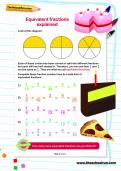

Boost Your Child's Learning Today!
- Start your child on a tailored learning plan
- Complete the activities added each week
- Watch your child's maths & English confidence grow!
Did you know?
- While studying medicine Galileo decided to become a monk, but soon left the monastery he had joined in order to study mathematics. He became interested in mathematics after accidentally attending a lecture on geometry.
- Galileo thought that the tides on the Earth were caused by the rotation of the Earth rather than anything to do with the moon (as had been suggested by Kepler). This particular theory of Galileo’s was in fact wrong.
- Although Galileo never married he did have three children with a woman called Marina Gambia – two daughters and a son. His two daughters became nuns and Galileo used to fix things at the convent where they lived.
- Galileo’s approach to science was unusual at the time – scientists didn’t generally carry out experiments to test out their theories. Effectively Galileo developed what we now know as ‘the scientific method’ of experimentation.
- As a young man, Galileo was fascinated by the pendulum movement of a chandelier he was watching. This ultimately led him to his work on a pendulum clock.
Galileo gallery:
- Statues of Galileo
- Galileo's tomb in Santa Croce, Florence
- Pisa, Italy – Galileo's birthplace
- The solar system
- Europa, one of Jupiter's moons
- A Galilean thermometer
Gallery
About
Born in 1564, in Pisa, Italy, Galileo Galilei went to school at the Camaldolese Monastery. He began studying medicine in 1581 at the University of Pisa, before swapping to mathematics. He was fascinated by geometry and after his studies taught mathematics at both the University of Pisa and the University of Padau.
During his time teaching, Galileo carried out lots of experiments exploring mechanics and the speed with which things fall. He was also interested in the way in which pendulums worked.
Galileo developed many mathematical theories about motion and mechanics. He suggested that all things fall to the ground at the same speed, even with different masses. He also noticed that when things fall they accelerate in a constant way – he came up with the idea that the distance something falls is proportional to the time it falls for, squared. He also suggested that if something is moving along a flat surface, it will move at a constant speed unless something interferes with it – this went on to become Newton’s First Law of Motion.
In 1609, Galileo developed the idea for a more powerful telescope after a Dutchman invented a low magnification telescope. In his lifetime he managed to improve the magnification of his telescope from 3x to 30x. Galileo used his telescope to study the sky and in 1610 he discovered the four moons that orbit Jupiter (individually called Io, Callisto, Europa and Ganymede, but more collectively now known as the Galilean Moons). He also observed ‘phases’ of Venus, when the planet was more visible at different times. Because there were moons orbiting Jupiter, and that Galileo had observed changing ‘phases’ of Venus, this challenged the general belief that everything moved around the Earth. As a result Galileo published his findings suggesting that the sun was the centre of the solar system, not the Earth (Copernicus had also suggested this sun-centric model). This idea got Galileo into big trouble with the authorities of the Catholic Church and they accused him of heresy (having an opinion that went against the general beliefs held by the church). He was tried by the Roman Inquisition and found guilty and sent to prison, although he spent most of his sentence at home under house arrest.
As well as developing the telescope, Galileo invented many other things. He developed the geometric compass, a thermometer and a pendulum clock.
Galileo also discovered Saturn’s rings and that our moon (that was previously thought to be a perfect sphere) had mountains and craters on its surface. He also identified sunspots.
Galileo was the first person to observe Neptune, although at the time he didn’t realised that it was a planet, and to note that the Milky Way was made up of stars.
Galileo went blind in his old age, but still managed to write and develop ideas. In 1638 his book exploring motion and mechanics Discourses Concerning Two New Sciences, was published. He died in 1642 at the age of 77.
Words to know
Astronomy – the study of stars, moons, planets and other ‘celestial’ objects.
Crater – a large rounded hole found on the surface of celestial objects (like a moon or planet) which have usually been formed by a meteorite hitting the surface
Geometric compass – an instrument used to draw curves and circles and for measuring the distances between two points.
Geometry – a strand of mathematics that explores points, angles, lines, surfaces and solids.
Heresy – having an opinion that went against the general beliefs held by the church.
House arrest – being kept imprisoned in your home.
Mass – the amount of matter that makes something up. It is often measured through weight.
Mathematics – the study of numbers, shapes and quantities.
Motion – when something moves.
Thermometer – an instrument that can measure changes in temperature.
Telescope – a piece of equipment that magnifies what you see through it, making things appear bigger and closer. Telescopes are often used to look at stars, moons and planets.
Related Videos
Just for fun...
- Have a go at this quiz about Galileo
- Watch "Galileo" in a Horrible Histories song, The Earth Goes Round the Sun Song
- Build a model of the solar system
Children's books about Galileo Galilei
Find out more
- Learn more about Galileo from the BBC
- Explore facts about the solar system
- Read about the "father of physics", Galileo Galilei, in a children's guide
- Discover facts about Galileo from the Oxford University Press
- Find out how a Galilean Thermometer works
See for yourself
- Do some sky at night exploration yourself, using a telescope.
- Watch a scientist recreate Galileo's experiment at the Leaning Tower of Pisa which disproved Aristotle's hypothesis that the speed at which an object falls depends on its mass.
- See a replica of Galileo’s telescope at The Science Museum in London
Also see

Give your child a headstart
- FREE articles & expert information
- FREE resources & activities
- FREE homework help
